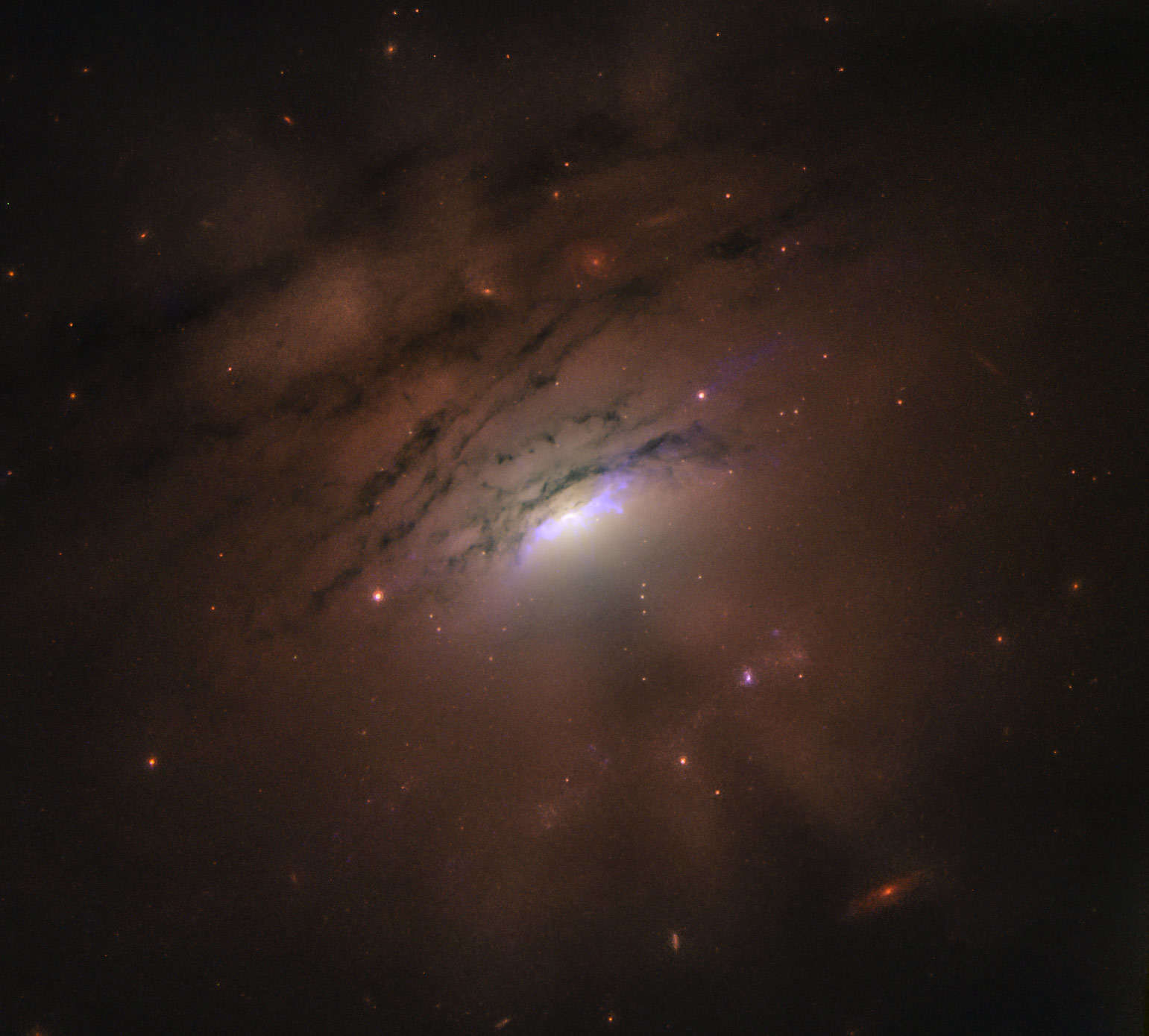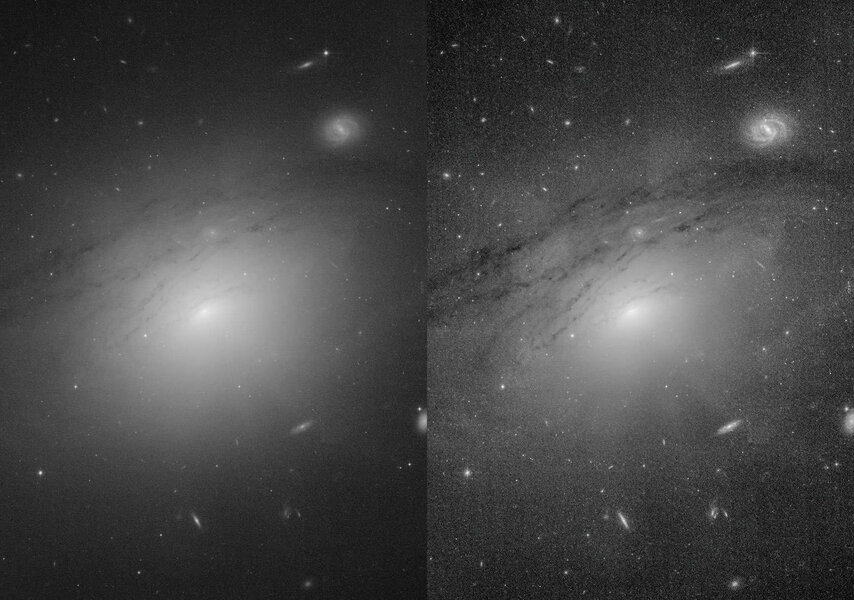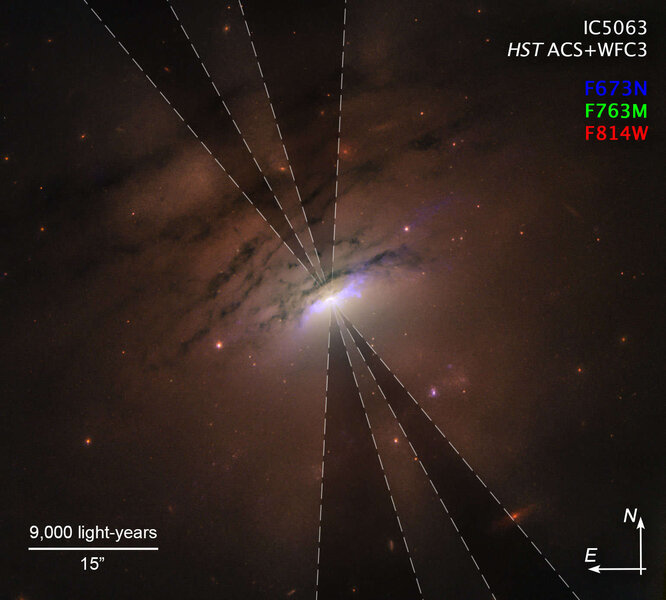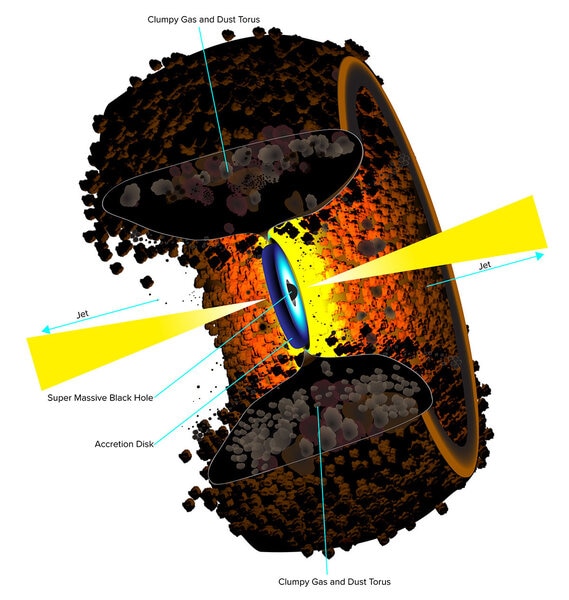Create a free profile to get unlimited access to exclusive videos, sweepstakes, and more!
The tweet that led to a science paper about galactic crepuscular rays

Y'all should know Judy Schmidt's name by now. I've linked to her work many times here on the blog; she's an image processing wizard, taking raw images from Hubble and turning them into ridiculously beautiful art.
There's science there, too, like a weird nebula she and I tried to figure out in a nearby galaxy. We never really reached a conclusion on that one, but sometimes what she does leads to not just science, but a science publication.
And in this particular case it started with a tweet:
This is a Hubble image of the sorta nearby galaxy IC5063, which is about 160 million light years away. It's a disk galaxy, though it's hard to tell in that image. What Judy was straining to see are what look like rays of light coming out from the center, very faint, just barely above the background levels of the image.
A lot of astronomers follow her, and a conversation started (click through the tweet above to see the whole thing). Dr. Julianne Delcanton suggested they look like ionization cones: Intense light from the center of the galaxy blasts out and zaps gas around it, creating glowing triangles of light in images. We all agreed it does look like that (especially after Bill Keel processed the image to enhance the rays), and then, after Judy asked if they could be shadows, one of us (cough cough) suggested they do look like crepuscular rays: Opaque stuff deep in the center of the galaxy blocks the light in some directions but not others, so you see bright and dark rays fanning out, like rays of light from the setting Sun (crepuscular means relating to twilight).
Astronomer Peter Maksym got in on the thread… and now here we are, less than a year later, and he's published a paper on this image (with Judy listed as a co-author)!
IC 5063 is what we call an active galaxy: Like every major galaxy it has a supermassive black hole in its heart, but in this case material is falling into the black hole. A lot of material, and it forms a big accretion disk that can stretch from just beyond The Point of No Return to many hundreds of light years distant. This disk is infernally hot and therefore incredibly luminous. In some active galaxies it can easily outshine all the stars in the galaxy combined.
Outside the disk is a much larger torus (doughnut) of dust. Usually, this is all aligned with the great flat disk of the galaxy itself, but not always. In the paper, they argue that the torus is tipped significantly from the galactic plane, and it's the torus that's casting these shadows.
If the torus weren't there, the whole galaxy would have a spherical glow around it due to the intense light from the inner accretion disk lighting up dust around the galaxy. But the torus blocks some of that light, and we its shadow as dark rays fanning out from the center (so the speculation in the Twitter thread about ionization cones is pretty close to being correct). This may be due to patchy clumps of dust in the torus, which is why the light can get out in some directions.
I'll note this is what the authors consider the likely explanation. Other ideas were looked at but are less likely, such as the bright rays being stars on X-shaped orbits (which has been seen before in galaxies, including our own), but given that IC 5063 is active I'd bet on this phenomenon being related to that.
Incidentally, given the distance to this galaxy, these rays reach out for about 35,000 light years! That's a long way.
This idea of torus shadowing had been speculated for a while, but never before seen. So this is a first! And it's all because Judy loves processing Hubble images, saw something funny, and decided to throw it out to the community on social media.
So from now on I'll be using this as an excuse to read Twitter. Why, I'm not fooling around. I'm doing pre-science!



















